Kubernetes on AMD64 with PC Engines APU2
Posted: | More posts about apu kubernetes
I want to run Kubernetes on amd64 hardware. I already own two Raspberry PIs, but I always struggle with ARM and the need to create custom Docker images. This post explains how to run a single-node Kubernetes (K3s) on the PC Engines APU2 board with an embedded AMD CPU.
I bought the APU2D0 board variant with 2GB RAM (101.75 €), red case (10.10 €), 60GB mSATA SSD (39.09 €), and power adapter (5.29 €) from VARIA. I also ordered the USB serial adapter (extra 10.49 €) as the APU does not have any video output and I don't have any serial port. The total order amount was 179.08 € incl. 19% VAT and shipping costs.
Unpacking
The order was delivered within 3 days and the APU came in a nice box:
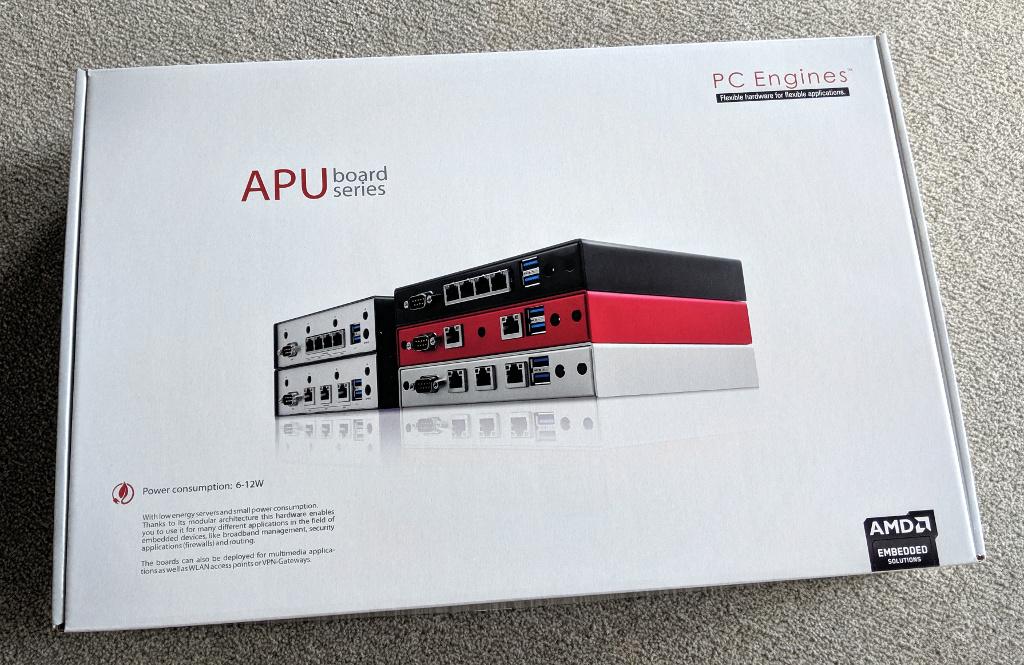
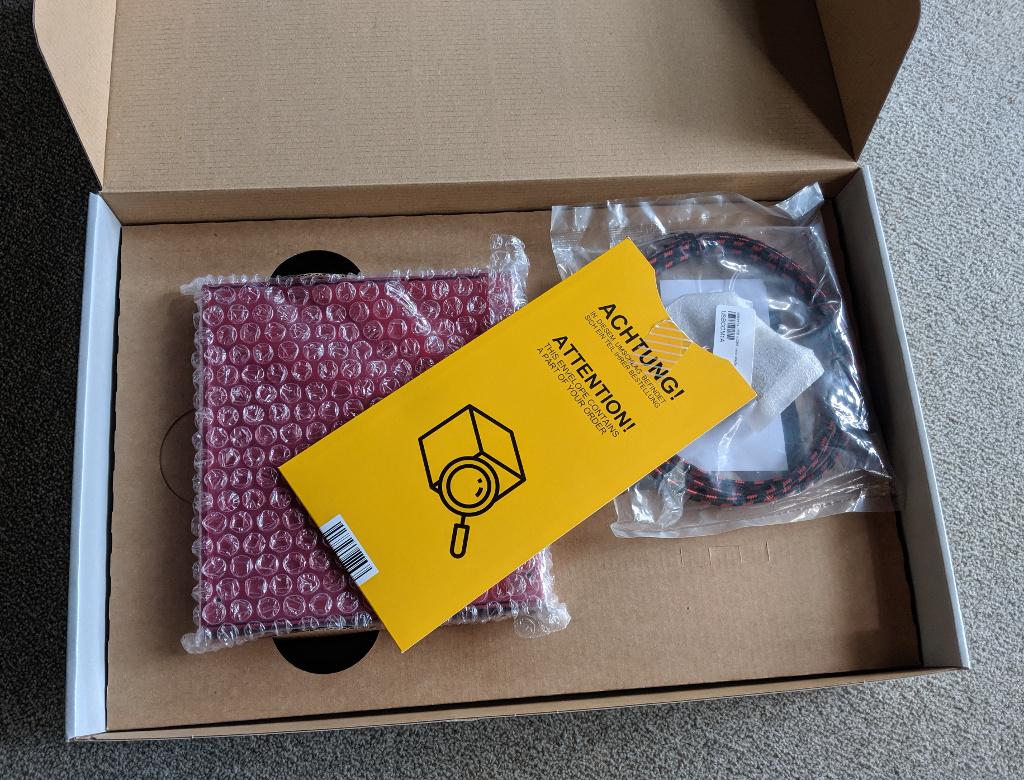
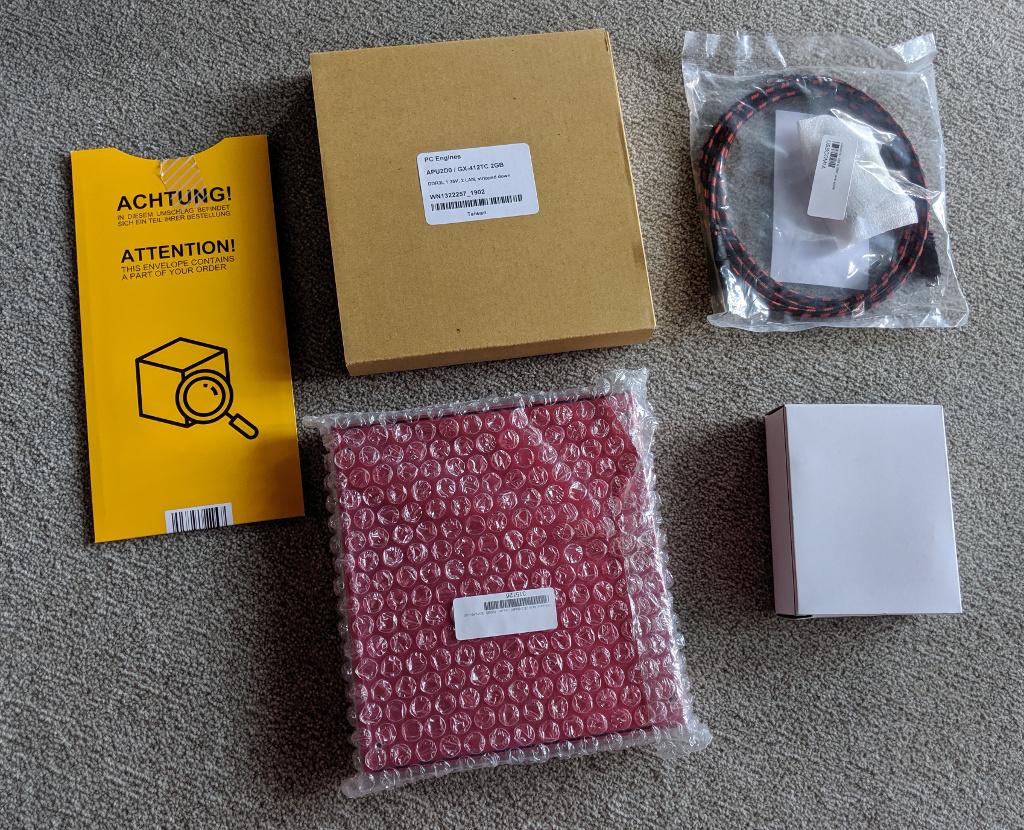
After unpacking, everything was there incl. heat spreader kit and screws for the enclosure. Note that the APU does not come with any manual.

I first installed the SSD into the mSATA slot:
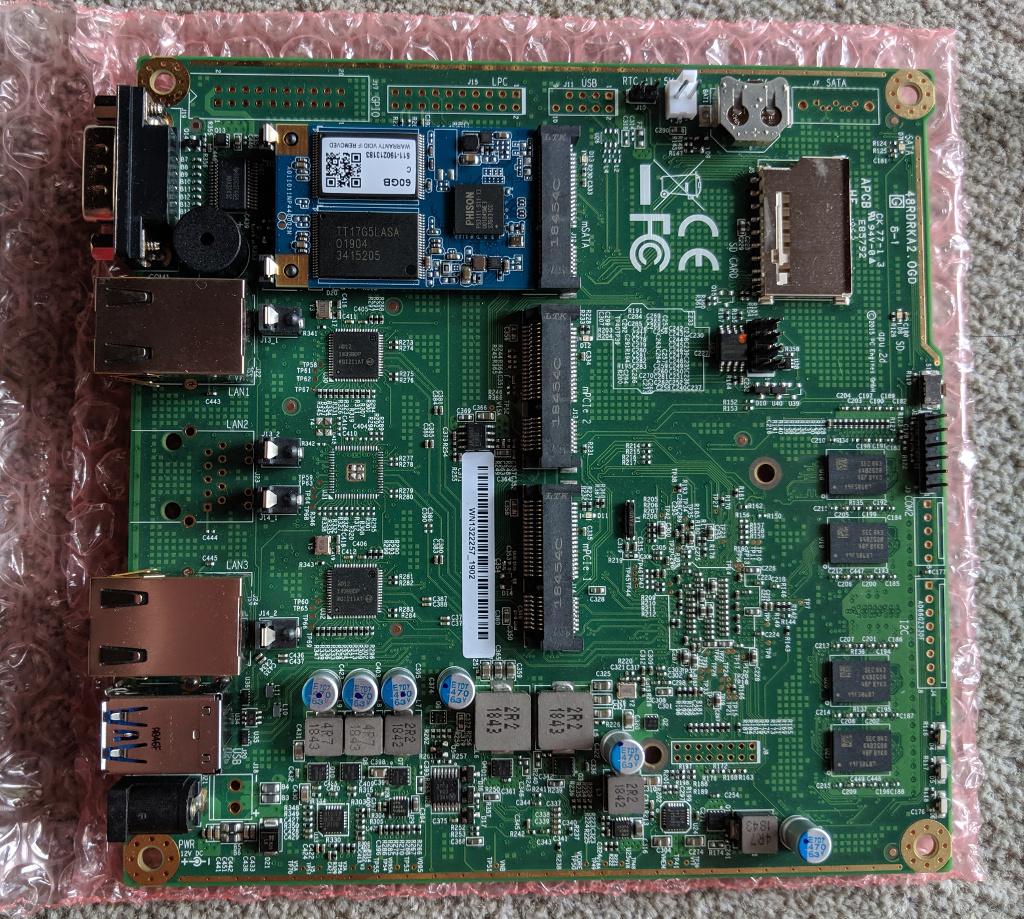
The AMD GX-412TC CPU is passively cooled by heat conduction to the bottom of the enclosure. Assembling the heat spreader kit was a bit tricky (putting the small thermal pad and heat spreader at the right location), but easy enough. After screwing the board to the enclosure and connecting everything, the board boots up (photo shows USB stick already connected):

Installing Ubuntu
I use Ubuntu 18.04 LTS as the server's operating system. So let's download mini.iso from the netboot installer dir and write it to a USB stick:
The APU does not have any video output, so we need to use the serial console, e.g. via PuTTY:
As I use the ordered USB serial adapter, the serial port is /dev/ttyUSB0.

Connect with PuTTY and boot up the APU with the USB stick connected. Pressing F10 during boot allows us to start the Ubuntu installation from USB stick:
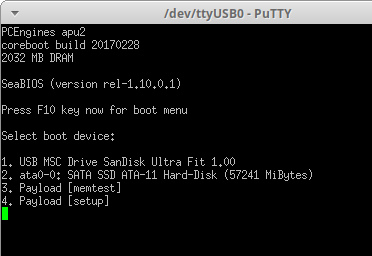
Select "Install" and press <TAB> to edit the command line to linux initrd=initrd.gz console=ttyS0,115200:
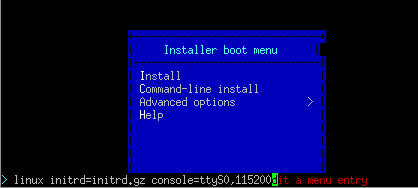
Install Ubuntu 18.04 LTS to your liking. Also directly install the OpenSSH Server.
After a reboot and login via SSH, modify GRUB to start with serial console:
$ sudo vi /etc/default/grub GRUB_CMDLINE_LINUX="console=ttyS0,115200n8" $ sudo update-grub $ sudo reboot
The next boot should automatically bring up the default Ubuntu login via serial console (PuTTY):
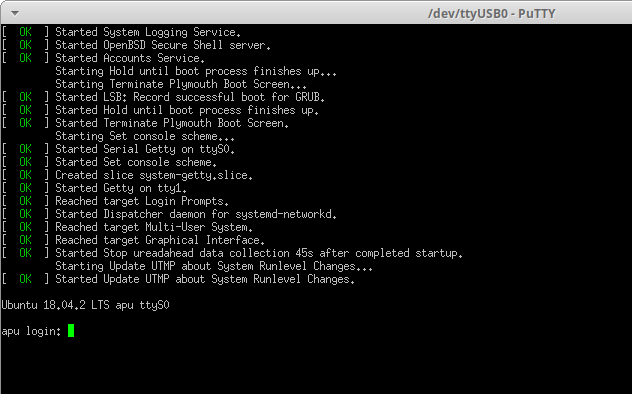
We can now use either SSH or the serial console for further steps.
Let's also configure temperature sensors:
Installing Kubernetes (K3s)
K3s does not require Docker, so we can install K3s directly:
Check that it's running:
$ sudo kubectl get pod --all-namespaces NAMESPACE NAME READY STATUS RESTARTS AGE kube-system coredns-695688789-5dspn 1/1 Running 0 76s kube-system helm-install-traefik-rsrbm 0/1 Completed 0 76s kube-system svclb-traefik-fxg8d 2/2 Running 0 18s kube-system traefik-56688c4464-wbjrt 0/1 Running 0 18s
K3s does not ship with the Kubernetes Metrics API for CPU/memory metrics. Let's install the Metrics Server:
$ git clone git@github.com:kubernetes-incubator/metrics-server.git $ sudo kubectl apply -f metrics-server/deploy/1.8+/ $ sudo kubectl top node NAME CPU(cores) CPU% MEMORY(bytes) MEMORY% apu 188m 4% 551Mi 29%
Finally install Kubernetes Operational View to have some minimal Kubernetes web UI:
$ git clone https://github.com/hjacobs/kube-ops-view.git $ sudo kubectl apply -f kube-ops-view/deploy/ $ sudo kubectl edit ingress kube-ops-view # change the hostname to kube-ops-view.apu.local
K3s ships with Traefik as Ingress controller, so we can point kube-ops-view.apu.local to the local IP of the APU server and get the Kubernetes Operational View in the browser:
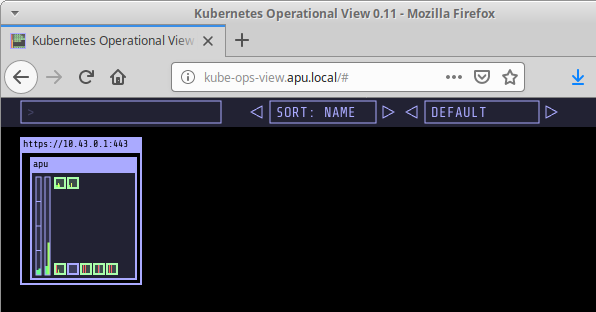
Screwing together the top enclosure leaves us with a nice red aluminium box:
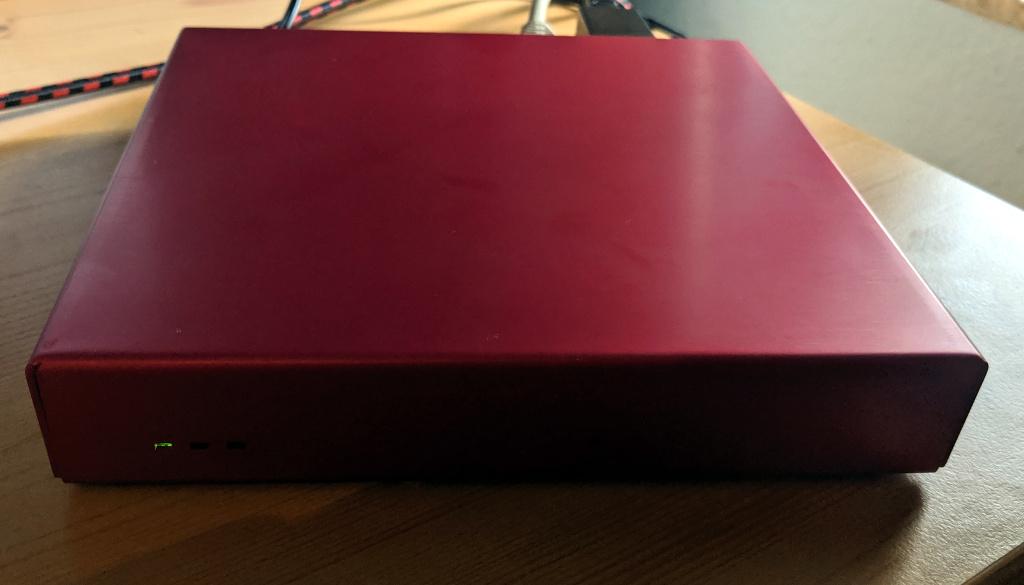
Measuring
Speed of the APU and K3s looks good so far: everything feels responsive. Sysbench CPU benchmark shows that the APU is 6x faster than the Raspberry PI 3, at least when I replicated the benchmark from geeks3d.
$ sysbench cpu run --threads=4 --events=10000 --cpu-max-prime=20000 --time=0 --validate sysbench 1.0.11 (using system LuaJIT 2.1.0-beta3) CPU speed: events per second: 479.62 General statistics: total time: 20.8442s total number of events: 10000
For comparison: my T480s laptop with i5-8350U CPU takes ~5s for the same task (4x faster than the APU).
I measured the power consumption and it mostly shows around 6W when idle (K3s and kube-ops-view running):
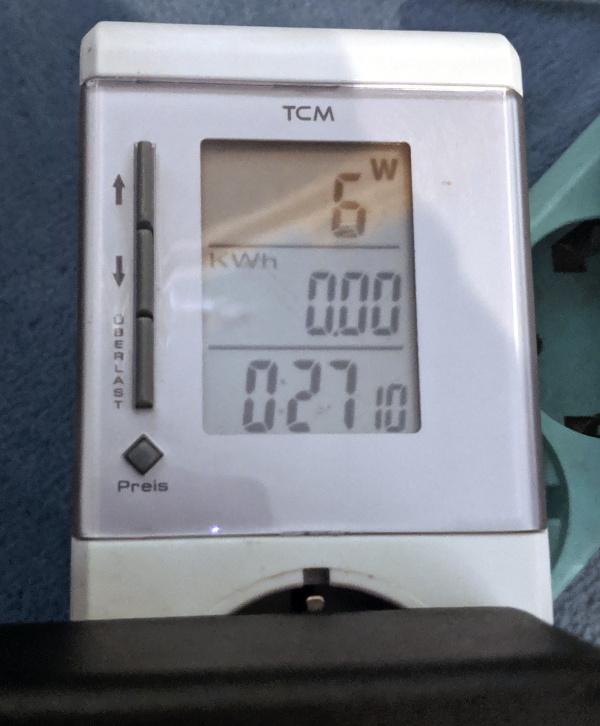
The CPU core temperature is constantly around 49-52° C (even when running sysbench), which sounds fine:
$ sensors k10temp-pci-00c3 Adapter: PCI adapter temp1: +52.6°C (high = +70.0°C) (crit = +105.0°C, hyst = +104.0°C) fam15h_power-pci-00c4 Adapter: PCI adapter power1: 8.21 W (interval = 0.01 s, crit = 6.00 W)
K3s, Metrics Server, and kube-ops-view only take limited capacity (6% CPU and 400 MiB of 2 GiB used):
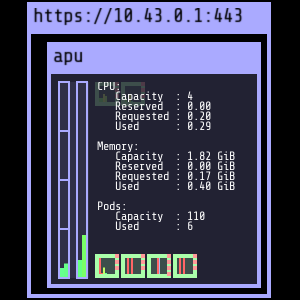
Summary
I'm quite happy with the first results:
installation via serial console was OK to deal with
the board and enclosure make a quality impression
speed (only 4x slower than my laptop) feels much better than the sluggish Raspi
power consumption (6-9W) and temperature seem to be reasonable
All in all I now have a small Kubernetes home server which can run any amd64 Docker image and still has plenty of free capacity :-)
That's it for now! I will post news after playing more with the server and K3s.